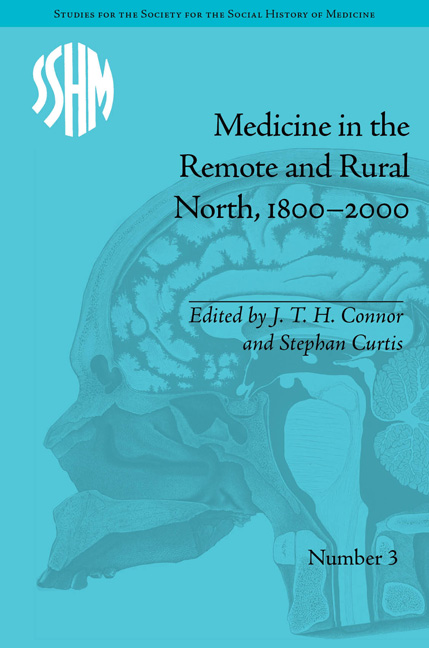Book contents
- Frontmatter
- CONTENTS
- Acknowledgements
- List of Contributors
- List of Figures and Tables
- Introduction: Cores/Peripheries – Rural/Remote: Medicine, Health-Care Delivery and the North
- Part I Remote Medicine and the State
- Part II Doctors and Doctoring in Remote Areas
- Part III Women, Health Care and the Practice of Medicine
- 9 The West Greenlandic Midwives 1820–1920: Mediators between their Compatriots and Danish Doctors
- 10 Delivering Health Care in Rural New Brunswick: Outpost Nursing in the Twentieth Century
- 11 Mother's Medicine: Women, Home and Health in the Peace River Region of British Columbia, Canada, 1920–40
- 12 Call of the Wild: Public Health Nursing in Post-War Lapland
- Notes
- Index
9 - The West Greenlandic Midwives 1820–1920: Mediators between their Compatriots and Danish Doctors
from Part III - Women, Health Care and the Practice of Medicine
- Frontmatter
- CONTENTS
- Acknowledgements
- List of Contributors
- List of Figures and Tables
- Introduction: Cores/Peripheries – Rural/Remote: Medicine, Health-Care Delivery and the North
- Part I Remote Medicine and the State
- Part II Doctors and Doctoring in Remote Areas
- Part III Women, Health Care and the Practice of Medicine
- 9 The West Greenlandic Midwives 1820–1920: Mediators between their Compatriots and Danish Doctors
- 10 Delivering Health Care in Rural New Brunswick: Outpost Nursing in the Twentieth Century
- 11 Mother's Medicine: Women, Home and Health in the Peace River Region of British Columbia, Canada, 1920–40
- 12 Call of the Wild: Public Health Nursing in Post-War Lapland
- Notes
- Index
Summary
Introduction: The Colonial Background
Western Greenland was colonized in 1721 by the Norwegian-Danish Lutheran missionary Hans Egede. The eastern and northern parts of Greenland were colonized much later, in 1894 and 1910, and the history of these areas deviated in many respects from the history of the west coast. In this discussion, the focus will be on western Greenland only, in the period 1820–1920.
Following in the footsteps of the mission, the Danish government took over all trade along the west coast of Greenland in 1726. From the very beginning the Danes hoped to create a trade network by granting trading rights in Greenland to private Danish companies. However, Danish merchants did not succeed in establishing a profitable trade in Greenland, so in 1776 the Danish government formed the Royal Greenlandic Trade Company (RGTC). From then until 1912 the RGTC operated both as the colonial administration of Greenland as well as a trading company, and until the end of the Second World War the company maintained a trade monopoly in Greenland. During the eighteenth and early nineteenth centuries RGTC established colonies (i.e., factories) and smaller trading posts along the coast. Until the early twentieth century the company policy of the RGTC was to protect the so-called national and ancestral Greenlandic occupation of seal hunting.
- Type
- Chapter
- Information
- Medicine in the Remote and Rural North, 1800–2000 , pp. 171 - 182Publisher: Pickering & ChattoFirst published in: 2014

